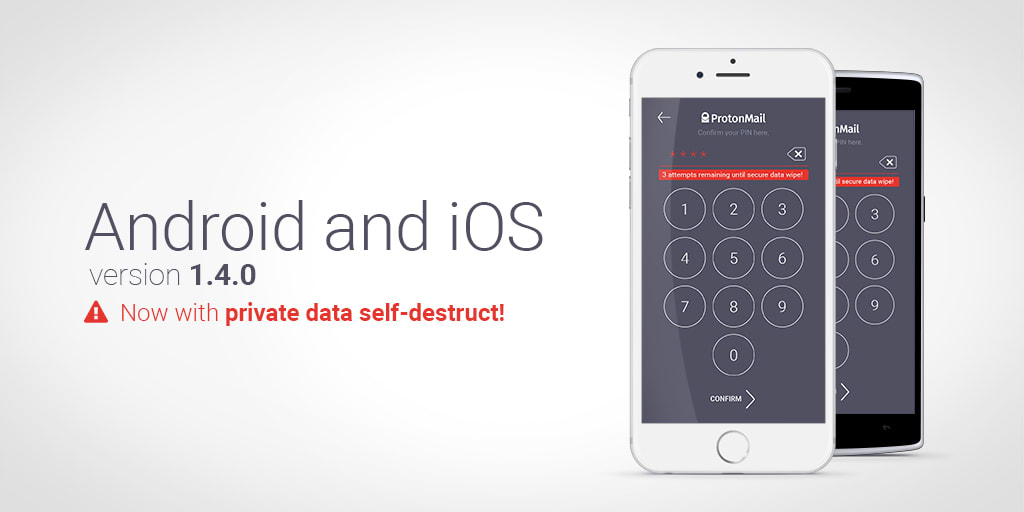We are happy to announce the release of version 1.4.0 of Proton Mail’s secure email app for iOS and Android! Version 1.4.0, which was previously available only to members of our mobile beta community, is now available in the iOS and Android app stores.
You can get the non-beta version of the apps from the following links:
Google Play store here(new window)
Apple App store here(new window).
It is still possible to register for the Proton Mail Mobile Beta Program. Not only is this a great way to support Proton Mail, you will be able to get early access to the newest mobile features before they are publicly available. Learn more(new window)
Proton Mail v1.4.0 contains numerous bugfixes to our secure email app, along with the addition of one important new email security feature.
Please consider supporting Proton Mail by upgrading to a Paid Account(new window). Your support allows us to continue to develop Proton Mail encrypted email as free and open source software(new window).
Secure Email Data Wipe
Security is only as strong as it’s weakest link. Secure Data Wipe is introduced to prevent your data from being compromised by someone “guessing” (Brute Force) your pin code on your mobile application. After 10 incorrect responses are entered into the pin code, all app data is completely wiped from your device. This information can be reloaded once you have successfully logged in using your login and mailbox password.
As we have recently seen, even supposedly secure devices such as iPhones can have their PIN lock mechanism bypassed(new window) and thus it is no longer sufficient to rely entirely on built-in device PIN locks as the only layer of security. In the event that your phone is stolen while in the unlocked state or has the primary pin lock cracked, the PIN lock on the Proton Mail app itself provides a second layer of security. Before v.1.4.0, if your phone is stolen, as long as it remains in the powered state, an attacker can repeatedly try different PIN codes until getting the correct one. With v1.4.0, the Secure Data Wipe feature is enabled by default on both the iOS and Android secure email apps as long as the PIN lock feature(new window) is enabled. For your safety, this feature cannot be disabled.
The full release notes for Android and iOS secure email app v1.4.0 can be found below:
Android
New Features
- Better support for Reply-To headers
- Deletion of the sensitive user data after 10 PIN wrong attempts
- Support for optional screenshot prevention
Bug Fixed
- Fix not showing empty inbox message if PIN is active
- Fix Retry of no connectivity in Message Details
Improvements
- Improved showing/loading of the labels
- Edit of the Display Name and Signature per Alias/Address
- Indication of more recipients in the short message details
iOS
New Features
- DataWipe, wipes information from device after 10 incorrect pin entries.
- Added “Lock The App” feature in sidebar when user enable Touchid or pin-code
added label manager in the settings - Added internet status check in mailbox and message details view.
- Automatically start composing a message in the Proton Mail app when clicking on ‘mail-to’ link into the message.
Bug Fixes
- Fix message is temporarily marked as Sent even if the address has a blank space
- Slow connection problem with message not sending
- Fix few decryption errors
- Fix user can’t add/edit contact with .photo email address
- Fix send attachment crashes sometime
Improvements
- Improve the reply to message UI
- Improve the draft auto save
- Add a button for TouchID in login screen, allowing users to ask for Touchid again after selecting the cancel button
- iPad UI improvements
- Allow editing of display name & signature for multiple addresses in settings















